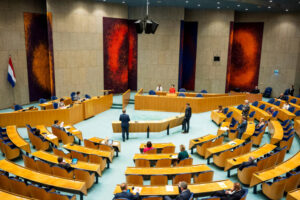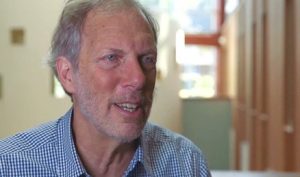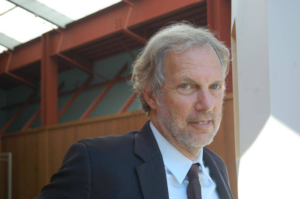Auke van der Berg ~ Ikki’s eiland. De horzel van het koninkrijk I. Het gesprek
 Rozenberg Publishers – ikkiseiland.com
Rozenberg Publishers – ikkiseiland.com
ISBN 90 978 3610 495 1
216 pagina’s – November 2017
Tweede druk mei 2018
Derde druk september 2020
Euro 19,50
$ 20,00
Omslag & DTP: Ingrid Bouws
Inhoudsopgave
Interviews:
Boi Antoin – Wat van ons is, is niet goed
Ben Oleana – Je moet eerst naar jezelf kijken
Michiel Bijkerk – Advocatuur als sacrale kuunst
Claudette Martijn-Reed – Ik was niet van plan de politiek in te gaan
Johan Giskus – Nederlanders houden niet van dansers
Larry Gerharts – Alles draait om enen en nullen
Norwin Willem – De knuppel is vervangen door woorden
Rignald Saragoza – Ik ben zo geboren, dat heeft een voordeel
Abilio Martis – Door hard te werken hoopte ik dat we het beter zouden krijgen
Misoyla Winklaar – Als je de hoop verliest, is er niets meer
Valerio Balentien & Aixa Abrahams – Alles gaat langzaam beter
Sidney Josepha – Op den duur kom je toch in Rome
Rachit Alberto & Sigmar Marchena – Er gebeuren dingen die je stil laten staan bij je leven
Giovanni Frans – Mijn wensen hebben niets met gezondheidszorg te maken
Kevin Thodé – Ik luister goed en hoor wat de mensen zeggen
James Finies – Er zijn veel mensen om me heen en ergens is het verhaal wel gelukt
Max Suart – Er is geen baby die als crimineel geboren wordt
Plus een veertigtal stukkies.
Het boek is hier gratis te downloaden: ikkis-eiland-de-horzel-van-het-koninkrijk-1-het-gesprek/
May Day And The United States Of Amnesia
 May Day is celebrated in more than 90 countries around the world as International Workers’ Day, with large-scale marches and protests, in honor of the struggles of the working class. But not in the country where it began, the United States of Amnesia.
May Day is celebrated in more than 90 countries around the world as International Workers’ Day, with large-scale marches and protests, in honor of the struggles of the working class. But not in the country where it began, the United States of Amnesia.
The history of May Day has its origins in the summer of 1884 when the Federation of Organized Trades and Labor Unions decided to launch a nationwide movement to secure an eight-hour workday and called for May 1, 1886 to be the beginning of this campaign.
On May 1, 1886, hundreds of thousands of American workers staged a nationwide march demanding the creation of the eight-hour workday.
Chicago was the epicenter of the protests as they were scheduled to go on for days.
Eventually, the protests turned violent when the police attacked picketing workers on May 3, killing one person and injuring several, at the McCormick Harvesting Machine Company, an event which led the next day to a bloodier confrontation between police and demonstrators in Haymarket Square.
What happened at Haymarket Square is an event of immense historical significance in its own right. More than 170 policemen carrying rifles attacked those that had gathered at Haymarket Square to protest police brutality, even though the city’s mayor, Carter Harrison, had given permission for the meeting.
Ironically enough, most of the people had already left the protest meeting when the police attacked in an attempt to disperse the crowd. But during the confrontation, someone threw a dynamite bomb. The police panicked and opened fire in return. After the explosion and the subsequent gun fire, four workers and seven policemen were dead and dozens injured.
The next day, martial law was declared in Chicago and other parts of the country. Immediately thereafter, scores of labor leaders were rounded up, and eight men, most of them German-born, were eventually found guilty of murder and sentenced to death in a highly controversial trial in which no solid evidence was presented linking them to the bombing of May 4 at Haymarket Square.
The Haymarket Affair also led to an explosion in xenophobia and started the first “Red Scare” in the United States, courtesy of big business and the government.
Additionally, it led to a much more reformist labor movement with the birth of the American Federation of Labor whose first and longest-serving president, Samuel Gompers, was a core capitalist and had no interest in uniting the working class.
In the years following the dramatic events of 1886, the labor movement in the US would experience a series of ups and downs, all while American capitalism continued to operate on the basis of a brutal economy, down to this very day.
The “Red Scare” resurfaced in the late 1910s, with industrialists branding union members as “anti-American radicals,” all while anti-union violence became a widespread practice until well into the mid-20th century.
In celebrating May Day in 2021, we must keep alive the memory of the early struggles of the working-class movement for a better future. We must draw strength and inspiration from the accomplishments of the labor movement through time in order to challenge more effectively the brutality of today’s capitalist socioeconomic order.
Indeed, the struggle against neoliberal capitalism requires a well-organized working-class movement that hasn’t succumbed to the form of historical amnesia imposed by the powers that be. The future has yet to be written.
Religiously Based Political Parties In Democracies. The Case Of The Netherlands
Since the Netherlands became a full-fledged democracy in 1848 political parties of diverse ideological backgrounds competed for the vote of the electorate, be they Christian parties, liberal parties, socialist parties, and more recently populist parties. Religions claim that their values are God given and therefore immutable. In a democracy with several ideological streams seeking representation in Parliament, it is in most cases difficult if not impossible for one party to obtain more than 50% of the votes, and that poses a challenge to those religious parties that claim to base themselves on ‘universal’ God given values[i]. They have either the choice to stay in an oppositional role in Parliament and continue giving voice to their opinions. The other option is that they seek alliances with parties to which they resemble in order to form a government. But that last strategy implies that they must be prepared to reach compromises with other parties, thus possibly renouncing in cases the ‘eternal’ values the parties claim to represent. The preparedness to compromise goes by the way as well for secular parties that claim ‘universal truths’, but the difference between religious parties and secular parties is of course that religious parties claim that their values are of a higher nature, i.e. coming from God.
This article treats how the mechanisms of compromise work in the Dutch political system, focusing in particular on religious, in the Dutch case, mostly Christian political parties that enter coalition governments with other -often- secular parties. The article first presents a description of the Dutch political system and its Constitution, and the coming to being of the Dutch Nation State. Then it goes into the subject of how governments are formed in the Kingdom. Following, the article treats the specific case of how the 2017 Dutch coalition government was formed and how it treated the highly sensitive issue of euthanasia law in its coalition agreement, where an orthodox Christian party and a secular party had to come to terms on this issue. I use this case as to show how a religious party can function in a democracy with, in the Dutch case, mostly non-religious parties.
1 The Dutch Political System and Constitution
The Netherlands form since 1848 a constitutional Monarchy in which the King functions as a symbol of the unity of the people of the Netherlands but he does not hold any political power. The government, consisting of the Prime Minister and the Ministers, exercise power and are held responsible for their acts in Parliament. The Dutch Parliament consists of two Chambers. The Second Chamber is elected directly by the people and consists of 150 seats. The electoral system is of a representative nature, implying that the total number of valid votes in elections is divided by 150. The Netherlands does not have constituencies like the United Kingdom and France have. The First Chamber consists of 75 seats and is elected indirectly by the representatives of the 12 provinces the country counts. The country has a tradition that in elections no party ever obtained an absolute majority in Parliament and therefore coalition governments always ruled the country[ii].
The first article of the Dutch Constitution reads as follows[iii]:
‘All persons in the Netherlands shall be treated equally in equal circumstances. Discrimination on the grounds of religion, belief, political opinion, race or sex or on any other grounds whatsoever shall not be permitted’.
This first article stipulates that all persons that live in the Netherlands are to be treated equally in equal circumstances. The fact that one is a man or a woman, that a person has Dutch roots or German, Chinese or any other root, that a person has conservative political opinions or progressive opinions, that a person is heterosexual, homosexual or transgender and that a person is a Christian, a Jew, a Muslim or an atheist, does not make a difference in their treatment.
Article 6 of the Constitution concerns the freedom of religion or belief and it is formulated as follows, in two parts[iv]:
– Everyone shall have the right to profess freely his religion or belief, either individually or in community with others, without prejudice to his responsibility under the law.
– Rules concerning the exercise of this right other than in buildings and enclosed places may be laid down by Act of Parliament for the protection of health, in the interest of traffic and to combat or prevent disorders.
Interesting in article 6 is that it mentions not only the right to profess freely one’s religion, but also one’s conviction (my italics). Conviction explicitly refers to non-religious beliefs, not necessarily religious ones. So, people with religious and non-religious, or secular, convictions have the right to profess these in Dutch society.
The present Constitution of the Netherlands is based on its first draft that dates to 1848.
2 The genesis of the Dutch nation state
In 1789 the French revolution took place. The world would soon learn to know the new French regime based as it was on the principles of the Enlightenment. The French revolution would be the cradle of modern democracy and France would soon spread the revolution over Europe. French revolutionary troops occupied the Netherlands in 1795 causing the ruling prince Willem V to flee to Germany[v]. In the Netherlands there were at that time already citizens, referred to as ‘patriots’, who supported the principles of the Enlightenment, opposing the prince and the nobles that wanted to stick to the old rule. The Netherlands knew until 1795 a decentralized government in which the several provinces enjoyed great autonomy. With the French and patriots taking over, the country formed a National Assembly that set itself in making a Constitution based on the principles of the French Revolution: Liberty, Equality and Fraternity. This was though no so simple. The Netherlands was until 1795 basically a country where the Protestant church was dominant and where the two other religious denominations, i.e. the Catholics and the Jews, were second rang citizens that never got positions in the local and provincial boards. The 80-year war against Spain (from 1568-1648) led to throwing of the yoke of the Spanish (and Catholic) occupier and although the Dutch Republic was at that time a relatively tolerant power in Europe when it comes to religious freedom, the Protestant church was dominant, and all other religions were subordinate to it. And now the new State had to develop a constitution that would guarantee liberty and equality to all citizens, including the Catholics and the Jews. It took a long time before the debates in the National Assembly led to a Constitution and laws that foresaw in the principle of equality for all but in the end, it managed to do so[vi][vii].
The French occupation ended in 1813. The French troops left the country to assist Emperor Napoleon in the last battles he fought and which he ultimately lost. The country looked back at 18 years of French presence. From 1806-1810 Napoleon had changed the country into a Kingdom with his own brother Louis Napoleon on the throne. Louis Napoleon was not a bad king. He tried to develop the country as much as possible in the spirit of the French revolutionary principles. When the French left, the country had a constitution that foresaw in the equality of all its citizens. The paradox of the period after the French left is that the Dutch nation state remained built on the principles of Enlightenment. There were voices in society that called for a retour to the situation before 1795 but the enlightenment ideology was stronger than the conservative forces. The Netherlands kept a constitution based on the enlightenment. The son of the late prince Willem V came back to the country to become the future King Willem I, and he as well submitted to the new order. The country wet itself in developing as a modern nation state, centrally governed, investing a lot in infrastructure and education.
In 1848 a reform of the constitution took place making the country more democratic than before. One of the major changes was that the King lost the political power he still had. A government that was democratically elected without any interference of a hereditary sovereign should rule the country. The King protested but accepted his limited role as head of state only. The principles of liberty, equality and fraternity had in the end led to a society, which not only legally foresaw in equal chances for all, but also in reality[viii].
Noam Chomsky And Robert Pollin: Green New Deal Is Essential For Human Survival
 This story is part of Covering Climate Now, a global journalism collaboration strengthening coverage of the climate story.
This story is part of Covering Climate Now, a global journalism collaboration strengthening coverage of the climate story.
Earth Day has been celebrated since 1970, an era which marks the beginning of the modern environmental movement, with concerns built primarily around air and water pollution. Of course, the state of the environment has shifted dramatically since then, and while environmental policy has changed a lot in the United States over the past 50 years, biodiversity is in great danger and the climate crisis threatens to make the planet uninhabitable. On the 51st anniversary of Earth Day, world-renowned scholar and public intellectual Noam Chomsky, Institute professor emeritus at Massachusetts Institute of Technology, laureate professor of linguistics and also the Agnese Nelms Haury chair in the Agnese Nelms Haury Program in Environment and Social Justice at the University of Arizona; and leading progressive economist Robert Pollin, distinguished professor of economics and co-director of the Political Economy Research Institute at the University of Massachusetts at Amherst, share their thoughts on the state of planet Earth in this exclusive interview for Truthout.
C.J. Polychroniou: The theme of Earth Day 2021, which first took place in 1970 with the emergence of environmental consciousness in the U.S. during the late 1960s, is “Restore Our Earth.” Noam, how would you assess the rate of progress to save the environment since the first Earth Day?
Noam Chomsky: There is some progress, but by no means enough, almost anywhere. Evidence unfortunately abounds. The drift toward disaster proceeds on its inexorable course, more rapidly than rise in general awareness of the severity of the crisis.
To pick an example of the drift toward disaster almost at random from the scientific literature, a study that appeared a few days ago reports that, “Marine life is fleeing the equator to cooler waters — this could trigger a mass extinction event,” an eventuality with potentially horrendous consequences.
It’s all too easy to document the lack of awareness. One striking illustration, too little noticed, is the dog that didn’t bark. There is no end to the denunciations of Trump’s misdeeds, but virtual silence about the worst crime in human history: his dedicated race to the abyss of environmental catastrophe, with his party in tow.
They couldn’t refrain from administering a last blow just before being driven from office (barely, and perhaps not for long). The final act in August 2020 was to roll back the last of the far-too-limited Obama-era regulations to have escaped the wrecking ball, “effectively freeing oil and gas companies from the need to detect and repair methane leaks — even as new research shows that far more of the potent greenhouse gas is seeping into the atmosphere than previously known … a gift to many beleaguered oil and gas companies.” It is imperative to serve the prime constituency, great wealth and corporate power, damn the consequences.
Indications are that with the rise of oil prices, fracking is reviving, adhering to Trump’s deregulation so as to improve profit margins, while again placing a foot on the accelerator to drive humanity over the cliff. An instructive contribution to impending crisis, minor in context.
Even though we know what must and can be done, the gap between willingness to undertake the task and severity of the crisis ahead is large, and there is not much time to remedy this deep malady of contemporary intellectual and moral culture.
Like the other urgent problems we face today, heating the planet knows no boundaries. The phrase “internationalism or extinction” is not hyperbole. There have been international initiatives, notably the 2015 Paris agreement and its successors. The announced goals have not been met. They are also insufficient and toothless. The goal in Paris was to reach a treaty. That was impossible for the usual reason: the Republican Party. It would never agree to a treaty, even if it had not become a party of rigid deniers.
Accordingly, there was only a voluntary agreement. So it has remained. Worse still, in pursuit of his goal of wrecking everything in reach, the hallmark of his administration, Trump withdrew from the agreement. Without U.S. participation, in fact leadership, nothing is going to happen. President Joe Biden has rejoined. What that means will depend on popular efforts.
I said “had not become” for a reason. The Republican Party was not always dedicated rigidly to destruction of organized human life on Earth; apologies for telling the truth, and not mincing words. In 2008, John McCain ran for president on a ticket that included some concern for destruction of the environment, and congressional Republicans were considering similar ideas. The huge Koch brothers energy consortium had been laboring for years to prevent any such heresy, and moved quickly to cut it off at the past. Under the leadership of the late David Koch, they launched a juggernaut to keep the party on course. It quickly succumbed, and since then has tolerated only rare deviation.
The capitulation, of course, has a major effect on legislative options, but also on the voting base, amplified by the media echo-chamber to which most limit themselves. “Climate change” — the euphemism for destruction of organized human life on Earth — ranks low in concern among Republicans, frighteningly low in fact. In the most recent Pew poll, just days ago, respondents were asked to rank 15 major problems. Among Republicans, climate change was ranked last, alongside of sexism, far below the front-runners, the federal deficit and illegal immigration. Fourteen percent of Republicans think that the most severe threat in human history is a major problem (though concerns seem to be somewhat higher among younger ones, an encouraging sign). This must change.
Turning elsewhere, the picture varies but is not very bright anywhere. China is a mixed story. Though far below the U.S., Australia and Canada in per capita emissions — the relevant figure — it nevertheless is poisoning the planet at much too high a level and is still building coal plants. China is far ahead of the rest of the world in renewable energy, both in scale and quality, and has pledged to reach net-zero emissions by 2060 — difficult to imagine at the present pace, but China has had a good record in reaching announced goals. In Canada, the parties have just released their current plans: some commitment but nowhere near enough. That’s aside from the terrible record of Canadian mining companies throughout the world. Europe is a mixed story.
The Global South cannot deal with the crisis on its own. To provide substantial assistance is an obligation for the rich, not simply out of concern for their own survival but also a moral obligation, considering an ugly history that we need not review.
Can the wealthy and privileged rise to that moral level? Can they even rise to the level of concern for self-preservation if it means some minor sacrifice now? The fate of human society — and much of the rest of life on Earth — depends on the answer to that question. An answer that will come soon, or not at all.
Bob, in hosting the Earth Day 2021 summit, Biden hopes to persuade the largest emitters to step up their pledges to combat the climate crisis. However, the truth of the matter is that most countries are not hitting the Paris climate targets and the decline in emissions in 2020 was mostly driven by the COVID-19 lockdowns and the ensuing economic recession. So, how do we move from rhetoric to accelerated action, and, in your own view, what are the priority actions that the Biden administration should focus on in order to initiate a clean energy revolution?
Robert Pollin: In terms of moving from rhetoric to accelerated action, it will be useful to be clear about what was accomplished with the 2015 Paris climate agreement. Noam described the Paris agreement and its successors as “insufficient and toothless.” Just how insufficient and toothless becomes evident in considering the energy consumption and CO2 emissions projections generated by the International Energy Agency (IEA), whose global energy and emissions model is the most detailed and widely cited work of its kind. In the most recent 2020 edition of its World Energy Outlook, the IEA estimates that, if all signatory countries to the Paris agreement fulfilled all of their “Nationally Determined Contributions” set out at Paris, global CO2 emissions will not fall at all as of 2040.
It’s true that, according to the IEA’s model, emissions level will not increase any further from now until 2040. But this should be cold comfort, given that, according to the Intergovernmental Panel on Climate Change (IPCC), CO2 emissions need to fall by 45 percent as of 2030 and hit net-zero emissions by 2050 in order for there to be at least a decent chance of stabilizing the global average temperature at 1.5 degrees Celsius above pre-industrial levels. In other words, soaring rhetoric and photo opportunities aside, the Paris agreement accomplishes next to nothing if we are serious about hitting the IPCC emissions reduction targets.
The “American Jobs Plan” that the Biden administration introduced at the end of March does give serious attention to many of the main areas in which immediate dramatic action needs to occur. It sets out a range of measures to move the U.S. economy onto a climate stabilization path, including large-scale investments in energy efficiency measures, such as retrofitting buildings and expanding public transportation, along with investments to dramatically expand the supply of clean energy sources to supplant our current fossil fuel-dominant energy system. Burning oil, coal and natural gas to produce energy is now responsible for about 70 percent of all CO2 emissions globally.
The Biden proposal also emphasizes the opportunity to create good job opportunities and expand union organizing through these investments in energy efficiency and clean energy. It also recognizes the need for just transition for workers and communities that are now dependent on the fossil fuel industry. These are important positive steps. They resulted because of years of dedicated and effective organizing by many labor and environmental groups, such as the Green New Deal Network and the Labor Network for Sustainability.
I also have serious concerns about the Biden proposal. The first is that the scale of spending is too small. This is despite the constant barrage of press stories claiming that the spending levels are astronomical. During the presidential campaign, Biden’s “Build Back Better” proposal was budgeted at $2 trillion over four years, i.e., $500 billion per year. His current proposal is at $2.3 trillion over eight years, i.e., somewhat less than $300 billion per year. So, on a year-by-year basis, Biden’s current proposal is already 40 percent less than what he had proposed as a candidate.
Is Saving The Planet Under Capitalism Really Possible?
C.J. Polychroniou looks at the evidence and wonders if our leaders’ ever consider that capitalism is at the core of what’s causing life on Earth to vanish.
The theme of the 51st Anniversary of Earth Day is “Restore Our Earth.” To be sure, while there has been a growing level of environmental consciousness since the first Earth Day and environmental policies have changed dramatically over the last fifty years, we are really in a race to save the planet.
As things stand, the world now faces two existential crises that threaten organized human life as we know it, and life in general on planet Earth. The first one stems from the continued presence of nuclear weapons. The second one comes from global warming. However, while a nuclear war is actually preventable, we are not sure about global warming.
Allow me to elaborate.
The world has been faced with a threat from a nuclear war since the end of the Second World War. It is an intolerable threat to humanity, and it may just be the case that we have managed so far to avoid a nuclear holocaust by sheer accident. But a nuclear war can be prevented by addressing the sources of conflict and going beyond arms control. We can actually abolish nuclear weapons.
On the other hand, global warming is a certainty. It is already happening. According to the 2020 Global Climate Report from NOAA’s National Centers for Environmental Information, the global annual temperature has increased at an average rate of 0.08 degrees Celsius per decade since 1880, but the average rate of increase since 1981 (0.18 degrees Celsius) has been more than twice that rate.
Moreover, the effects of global warming are already present and include excessive heat waves, frequent wildfires, more droughts, greater frequency, intensity and duration of hurricanes, and higher sea levels which will have profound impact on low-lying coastal areas.
The effects of global warming will also be felt most severely on all categories of human movement: displacement, migration, and planned relocation. The data on human movement in the context of the climate emergency is already daunting. The Internal Displacement Monitoring Center (IDMC), which has been compiling data since 2008 on displacement due to natural disasters, estimated that between 2008 and 2019 there were 265 million new displacements associated with disasters such as storms, floods, and wildfires. This figure does not include estimates on displacement related to drought or estimates on migration and planned relocation associated with the climate emergency.
The impact of human migration due to the climate crisis is expected to be simply overwhelming. A report released by the World Bank in 2018 estimates that three regions of the world (Latin America, sub-Saharan Africa, and Southeast Asia) will produce 143 million more environmental migrants by 2050.
Make no mistake, global warming is the defining crisis of our time. Climate change has always happened on planet Earth, but there is overwhelming scientific evidence that the Earth’s globally averaged temperature surface temperature has been rising due to anthropogenic factors. According to the Intergovernmental Panel on Climate Change’s (IPCC) fifth assessment report, human emissions and activities have caused 100% of the observed increase in temperature since 1950.
The Global Economy In The Age Of The Pandemic And Beyond: An Interview With Political Economists Gerald Epstein And Robert Pollin
 The global economy experienced a massive contraction in 2020, with the overall global GDP falling by 4.3 percent. Compare that with the 2008 global financial crisis, which triggered a 1.8 drop in global output in 2009, and it’s bluntly clear why the Organization for Economic Cooperation and Development (OECD) called the global recession triggered by the pandemic “unprecedented in recent history.” Moreover, the World Bank sees a subdued recovery in 2021, while noting simultaneously that “if history is any guide, the global economy is heading for a decade of growth disappointments unless policy makers put in place comprehensive reforms.” In addition, there are stern warnings from major establishment institutions about the impact of climate change on financial and economic activity that makes one wonder what the future holds for global development and prosperity.
The global economy experienced a massive contraction in 2020, with the overall global GDP falling by 4.3 percent. Compare that with the 2008 global financial crisis, which triggered a 1.8 drop in global output in 2009, and it’s bluntly clear why the Organization for Economic Cooperation and Development (OECD) called the global recession triggered by the pandemic “unprecedented in recent history.” Moreover, the World Bank sees a subdued recovery in 2021, while noting simultaneously that “if history is any guide, the global economy is heading for a decade of growth disappointments unless policy makers put in place comprehensive reforms.” In addition, there are stern warnings from major establishment institutions about the impact of climate change on financial and economic activity that makes one wonder what the future holds for global development and prosperity.
With the above in mind, one needs to ask the following: Why did the ramifications of the CPVID-19 pandemic end up being so great and with far wider reaching effects than any other previous recession? Indeed, in what ways did the pandemic change the world? Moreover, did policymakers utilize all of the tools available to them to diminish the scope of the recession? And what should be done to ensure that economic recovery is steady and sustainable in the post-pandemic era?
In an interview below with C. J. Polychroniou, leading political economists Gerald Epstein and Robert Pollin shed considerable light on the above questions. Gerald Epstein is Professor of Economics and Co-Director of the Political Economy Institute at the University of Massachusetts at Amherst; Robert Pollin is Distinguished Professor of Economics and Co-Director of the Political Economy Institute at the University of Massachusetts at Amherst.
C. J. Polychroniou: The outbreak of the coronavirus pandemic caused a massive contraction of global economic activity. In what ways is the Covid-19 induced recession different from previous ones, including the 2008 global financial crisis, and how did it change the world?
Robert Pollin: If we consider the roughly 90-year period from the 1929 Wall Street collapse to the present, it is certainly the case that our current COVID-19-induced recession has been unique. To begin with, it is the only recession that was caused by a public health pandemic. Of course, previous recessions did also have triggering events—for example, the collapse of speculative financial bubbles both in 1929 and 2007 and the near-doubling of global oil prices both in 1973 and again in 1979. But these previous economic “shocks” were occurring within the operations of the economic system, not the public health system.
The public health shock in 2020 produced a cascade of other impacts that were also unique. One was that the speed and intensity of the economic downturn was unprecedented, even relative to the months immediately after the October 1929 Wall Street crash, which ushered in the 1930s Great Depression. Focusing for the moment on the United States, the number of people who lost their jobs and filed for unemployment insurance went from 256,000 in the week of March 14, 2020 to 2.9 million, the following week of March 21, an 11-fold increase. Two weeks later, in the week of April 4, the number of people filing for unemployment insurance spiked still higher, to 6.1million people. That was a 24-fold increase in the three-week period between mid-March and early April. Over the full year since the onset of the pandemic, 78 million people have applied to receive unemployment insurance. That is approximately half of the entire U.S. workforce. Moreover, these figures do not include the millions of people who lost their jobs but did not either qualify for unemployment insurance, or didn’t apply for whatever reason. It also doesn’t take account of the 8 million people who dropped out of the labor force within a matter of two months only, between February and April 2020. Remember that the U.S. experienced this magnitude of job losses over the year since the COVID outbreak despite the federal government mounting stimulus programs in March and December of 2020 amounting to about $3 trillion (14 percent of U.S. GDP) and the Federal Reserve bailing out Wall Street with another $3 trillion in bond purchases.
The European economies did not experience such severe spikes in unemployment. For the 27-country European Union, unemployment did rise, but only from 6.5 percent in February 2020 to a peak of 7.8 percent in September, before returning to 7.3 percent as of January 2021. This is despite the fact that the collapse in economic activity (as measured by GDP) was nearly as bad. Job losses weren’t as severe in Europe because several of the countries, including Germany, the UK, Ireland, and Denmark operated with work-sharing programs. With work sharing, workers are able to retain their jobs, while moving onto part-time schedules consistent with the decline in their employers’ revenue. For example, if the restaurant industry experienced a 36 percent decline in revenue, the businesses did not lay off 36 percent, or thereabouts, of its work force. It rather retained its workforce, but moved the workers onto roughly two-thirds time schedules. The employers then paid workers for two-thirds of their normal pay, while the government work-sharing program covered the remaining one-third. Congresswoman Pramila Jayapal, the head of the House Democratic Caucus, proposed such a program for the U.S., but her proposal went nowhere.
Latin America, sub-Saharan Africa, and India all experienced severe economic collapse during 2020. The expectation is that their recoveries will be slow and halting. This is first of all because, unlike the U.S. or Europe they don’t have the financial resources to mount major economic stimulus programs. They also haven’t been provided supplies of COVID vaccines at anywhere near the rate as the U.S. or even most of Europe. This is due to the pharmaceutical multinationals hoarding their vaccine patents rather than pushing out the vaccines as quickly as possible to all regions of the world, regardless of any country’s capacity to pay for them.
How long it will take to move the global economy onto a sustainable recovery path will depend, first of all, on how quickly inoculations become universal. Right now, it’s clear that protecting the profits of the pharma multinationals is taking priority over the health of the global population and an economic recovery.
C. J. Polychroniou: There is broad consensus that central banks can play a crucial role in supporting economic recovery. Did central banks respond to the Covid-19 pandemic as effectively as they could have? In other words, did they exhaust all of the available policy tools? And, if so, do they need new ones to combat the next economic downturn?
Gerald Epstein: The Covid-19 pandemic has had devastating impacts on the lives and livelihoods of millions of people around the globe. But for the wealthy, and for finance in particular, things have been mostly just fine.
The clearest picture of this contrast appears if one juxtaposes the global unemployment rate with the stock market we have experienced since the outbreak began in February 2020. As the pandemic took off in the Spring of 2020, global stock markets first crashed, and then, by the summer, started their gravity defying ascent. Meanwhile, the global deaths from the pandemic (or unemployment) have jumped and kept growing.
What accounts for this grotesque divergence? One key explanation is the massive financial intervention undertaken by the Federal Reserve (Fed), European Central Bank (ECB), Bank of England (BOE), and other central banks around the globe. When the pandemic first spread to Italy and then was announced by the World Health Organization (WHO) in February/March, panic gripped the global financial markets and these financial authorities immediately and massively stepped in. This enormous intervention led to a quick and remarkable recovery in global financial market activity and re-energized the “animal spirits” of stock market investors. But these interventions were much less favorable to workers, small businesses, and state and local/municipal governments, who were either more slowly helped by central government programs (in some countries) or not much at all (in others).
The intervention by the world’s major central banks was swift and powerful, much more so than with the Global Financial Crisis of 2007. In late January, 2020, word spread that the Covid-19 epidemic broke out into the open in Wuhan China, but it wasn’t until early February that it was clear that the virus was going to spread beyond China. On February 21, 2020, Italy announced a lockdown in the northern part of the country and then the global financial markets began to fall, and panic soon ensued. Immediately there was a flight to safety, with banks, hedge funds, stock market investors and others selling off their financial assets and buying “safe assets” notably US Treasury securities, German government securities (bunds) and the like. But when price movements and costs in these usually “safe” assets began to go haywire, financial institutions and wealthy investors began a desperate search for cash, in which they tried to liquidate these safe assets and bought the shortest term government assets and held cash assets in major banks. During this period, the corporate bond market experienced major distress as investors worried about the shut-down effects on corporate profits and cash flow, and the ratings agencies began downgrading these corporate securities. In the US, the municipal bond markets were also hit hard around the same time. In turn, the Fed, Bank of England (BOE) and the European Central Bank (ECB) massively intervened in financial markets, lowering interest rates close to zero, buying trillions of dollars of government bonds and other financial assets, and then creating special lending facilities to prevent bankruptcies, liquidity crises and asset fire sales in various financial markets around the world. In the Covid Panic, the Federal Reserve and other major central banks used many of the same tools during the Covid Crisis, as they had used to stabilize and bail-out the financial markets during the GFC, but they also created some new facilities to deal with problems in the financial markets.








